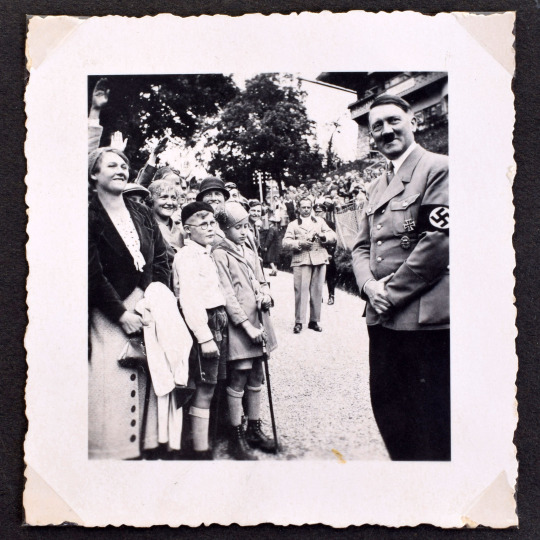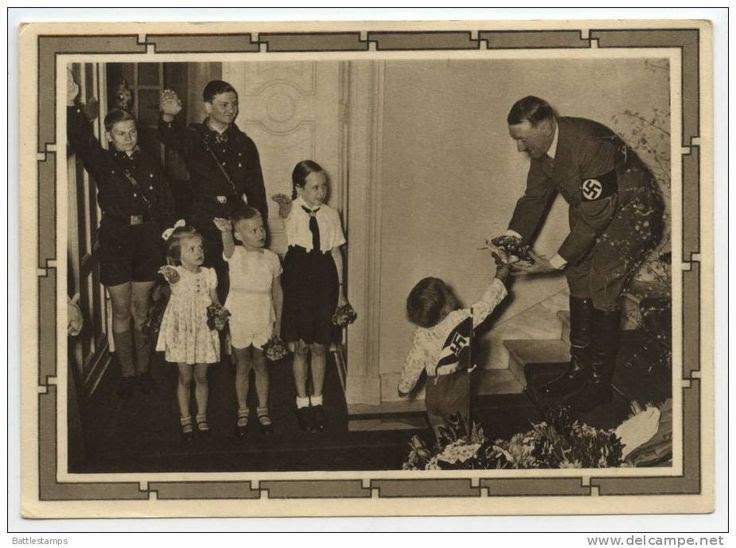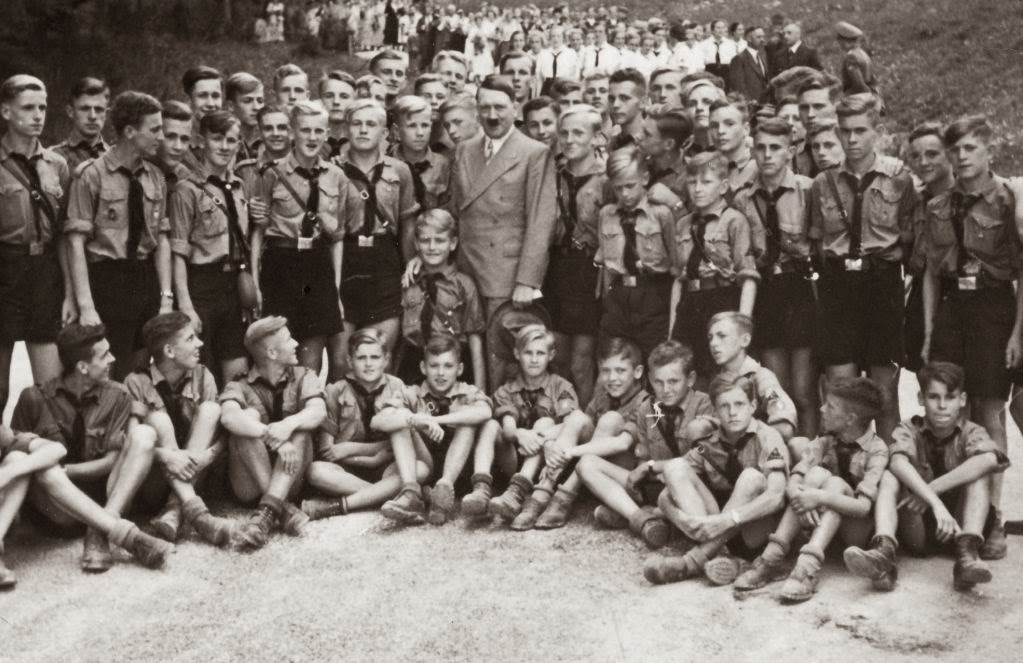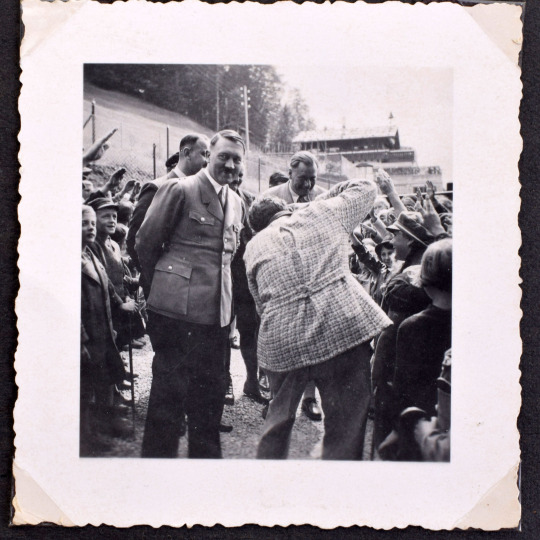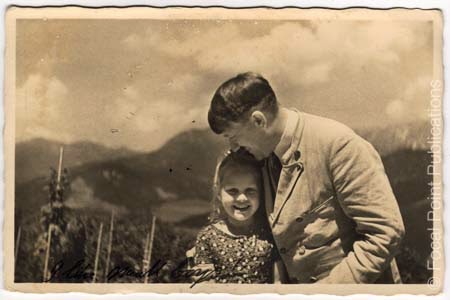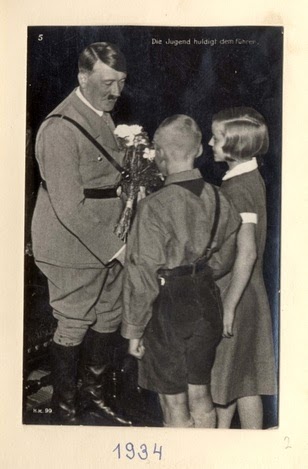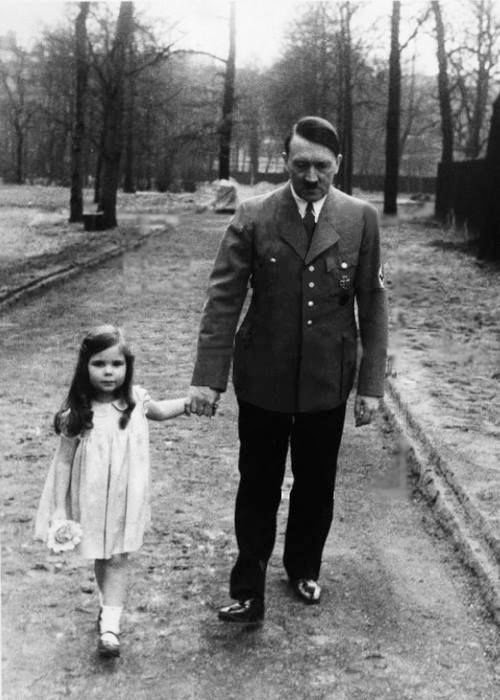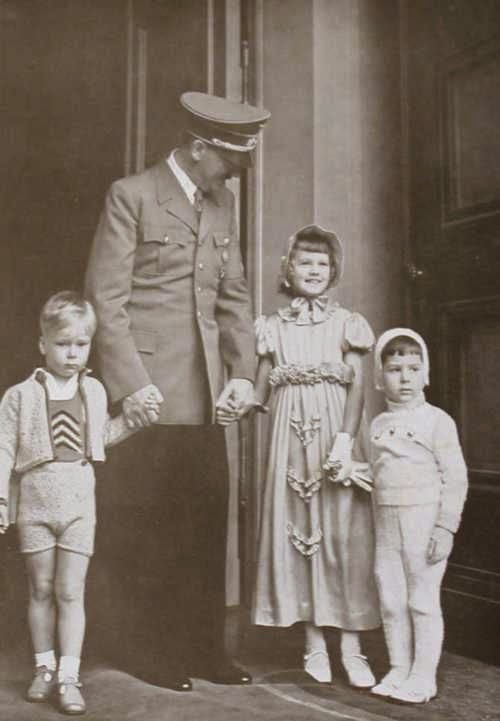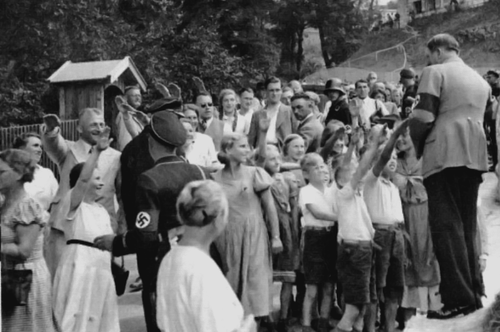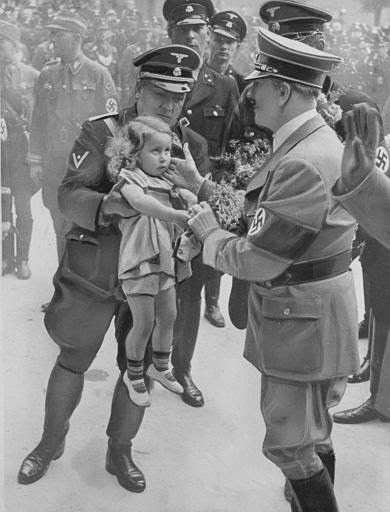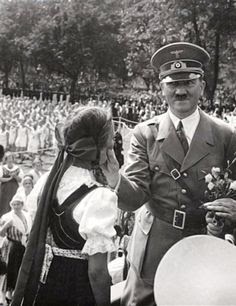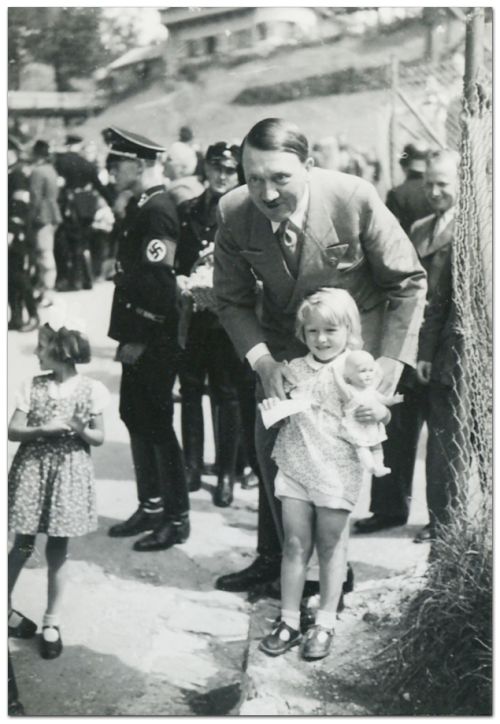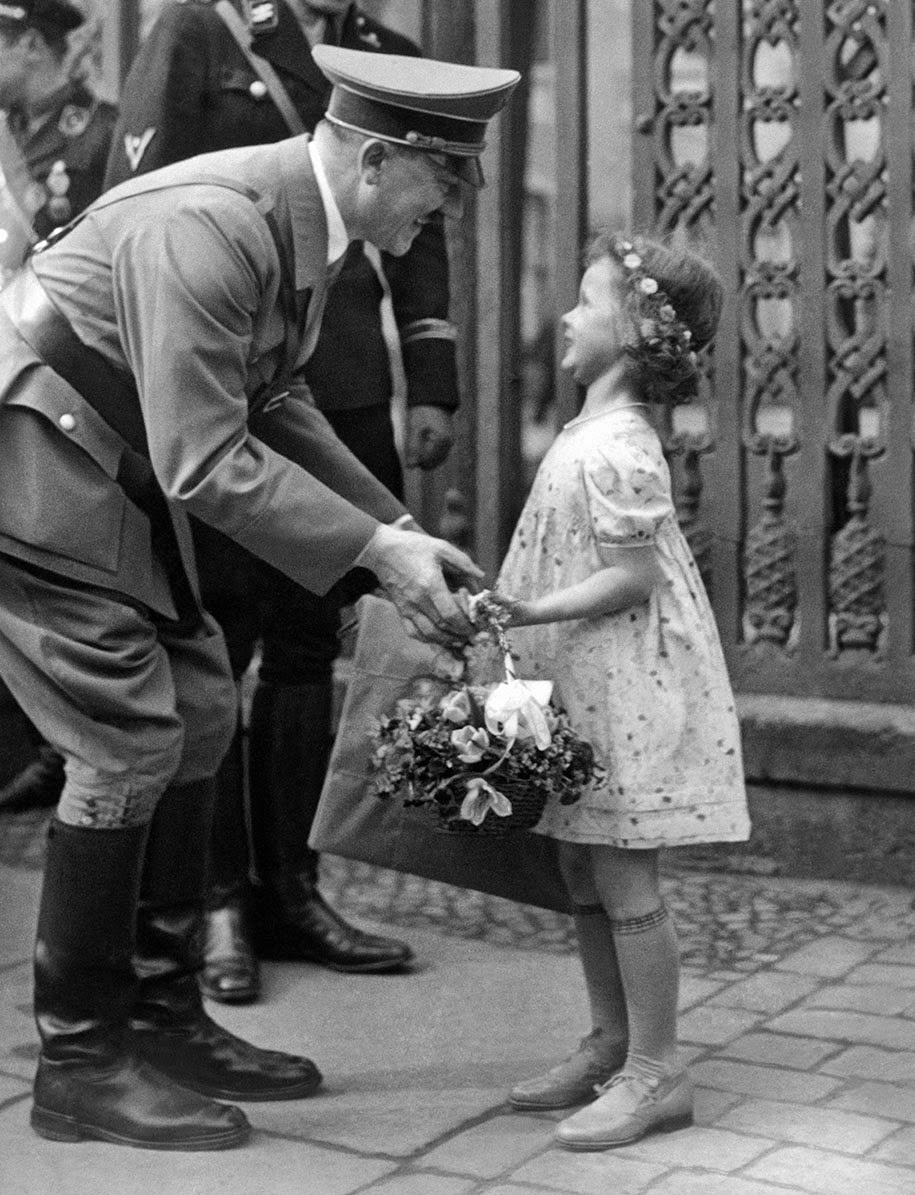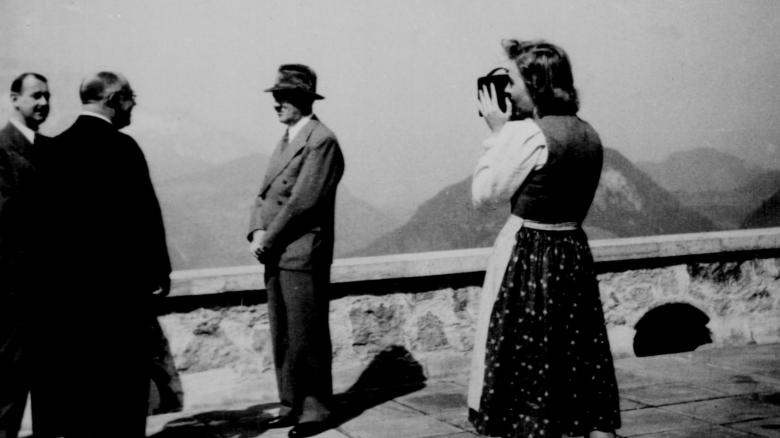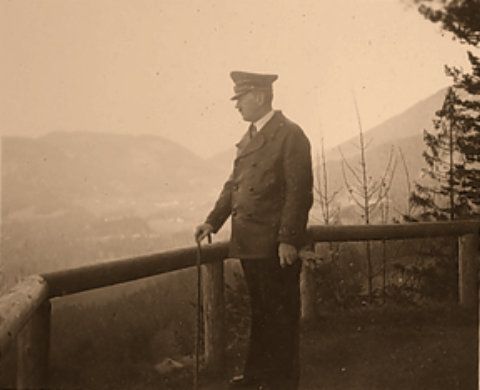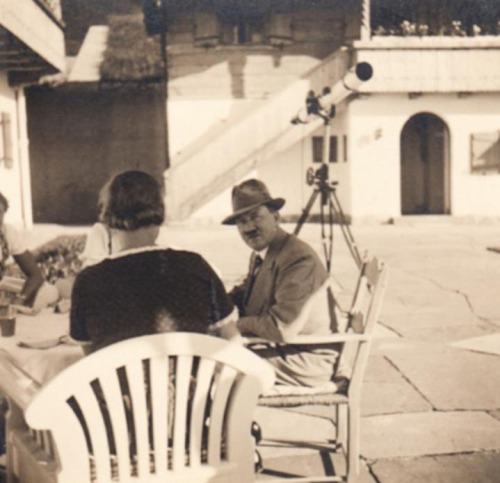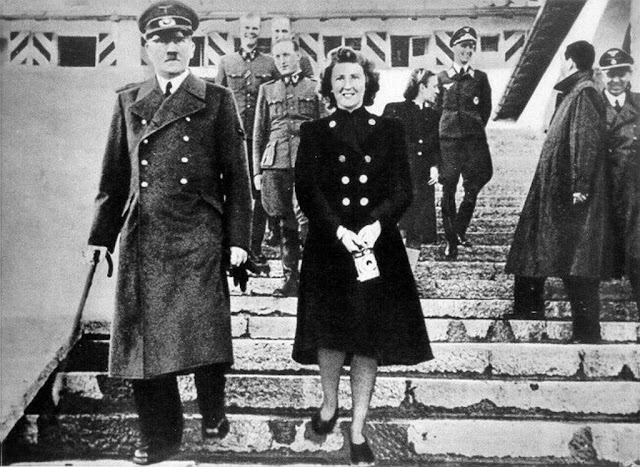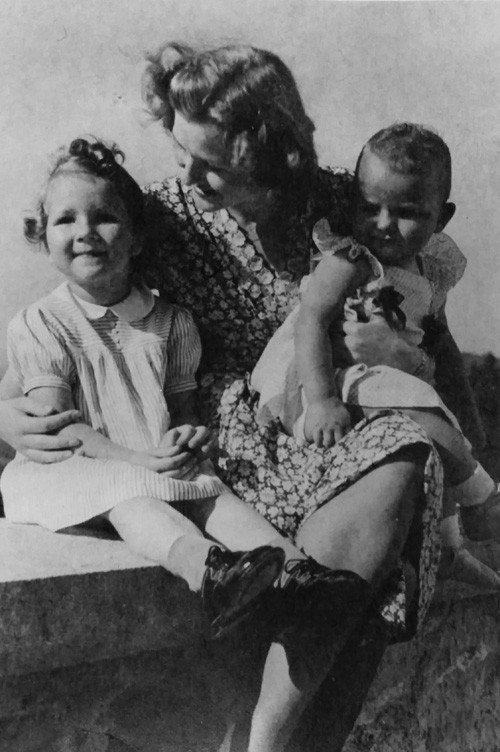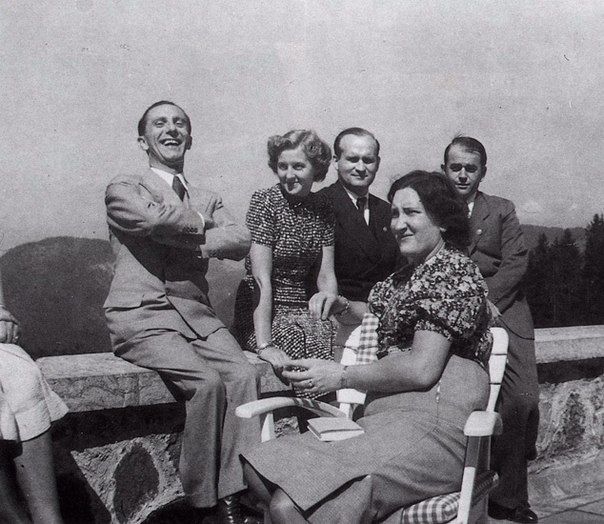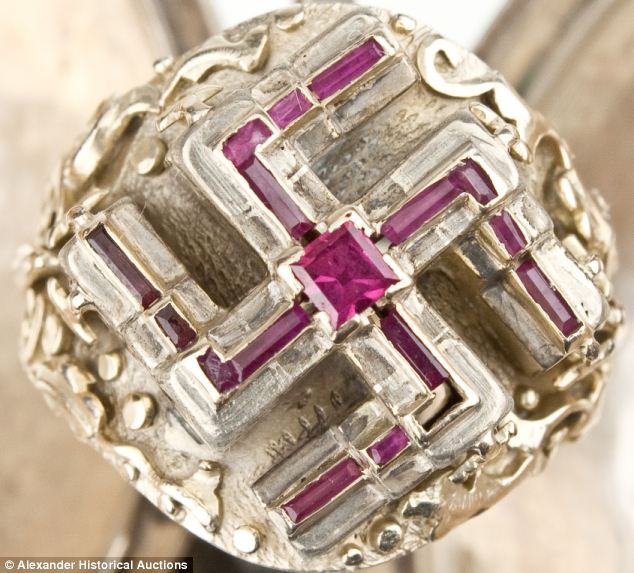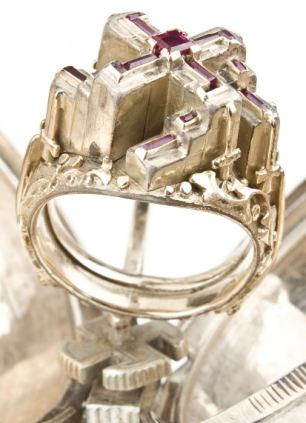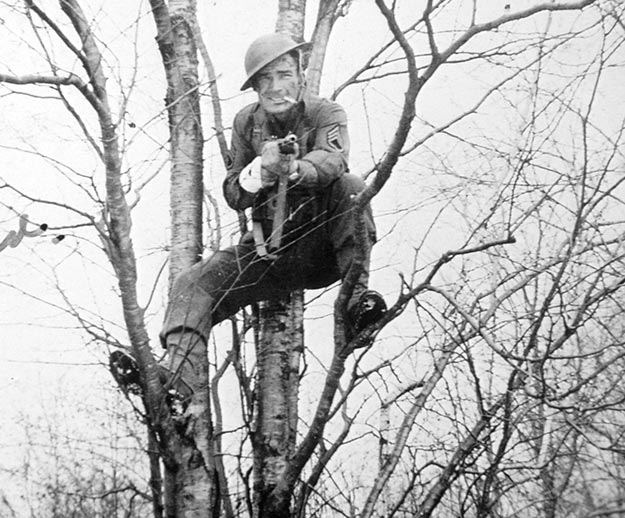 |
| Capt. Alven Baker wanted to capture Hitler. Presumably, an SOE operative on Operation Foxley would have concealed himself a bit differently. (Photo courtesy of Richard Baker). |
Adolf Hitler led a charmed existence. It wasn't so much that he worked his way out of poverty, survived his abortive coup that left the man standing beside him dead, or became Chancellor and supreme ruler of Germany despite never once winning more than 50% of the votes in a fair election. No, Adolf Hitler was charmed because he managed to do all that and not get shot or blown up despite the numerous and extremely capable people determined to kill him.
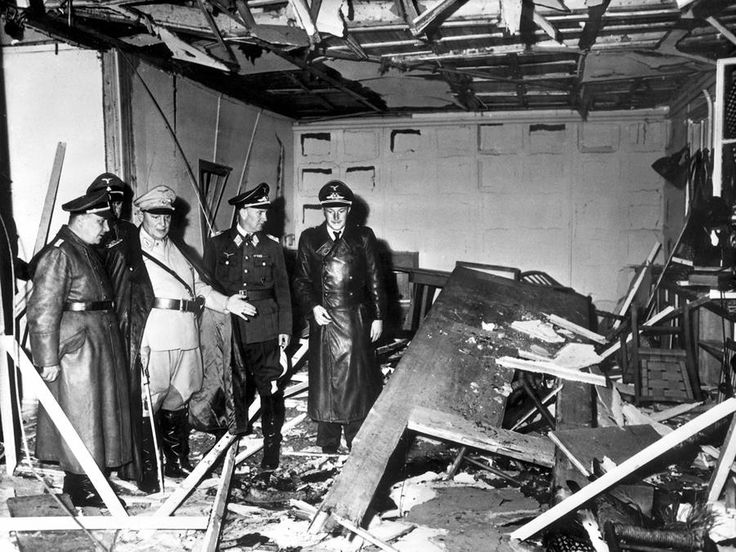 |
| One of many unsuccessful attempts to assassinate Hitler, the 20 July 1944 Stauffenberg plot. |
Everyone knows about the 20 July 1944 attempt by Claus von Stauffenberg to assassinate Hitler. Many also know that the Stauffenberg plot was simply the last in series of poorly executed, untimely or simply unlucky attempts to eliminate Hitler in time to make a good peace with the Allies. Far fewer, though, know that the German officers were not the only ones plotting to assassinate Hitler. The British were trying, too. This was
Operation Foxley.
Hitler and his Routines
Hitler was a creature of habit. He was known to not like seeing new faces in his presence, despite the fact that he despised several of them (such as his military chiefs). He had many routines. For instance, he would hold two situation conferences every day, one at noon and one at midnight (more or less). When at the Berghof in Berchtesgaden, Hitler would walk his dog, Blondi, in the woods every day. And, he would walk to take his daily tea.
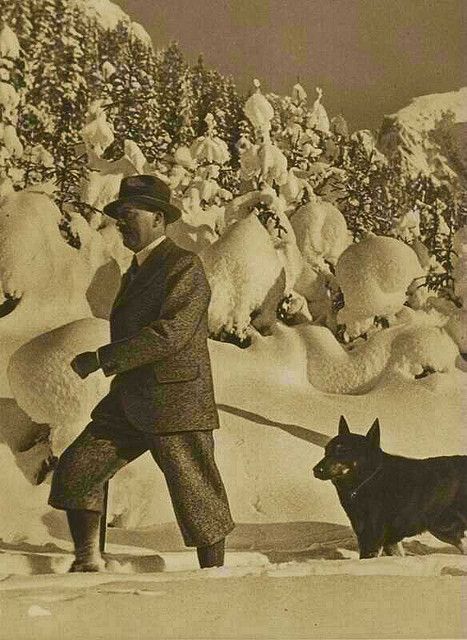 |
| Among Hitler's daily routines was walking Blondi. |
Walk to take his daily tea, you say? Why would he do that? He could just brew a pot at home! Well, he could have: but he didn't. And he had a good reason not to: he liked to walk there.
 |
| Hitler taking his daily constitutional to the teahouse with Heinrich Himmler, 1943-44. |
Hitler was well aware throughout his reign that people were trying to kill him. He also was smart enough to instinctively understand some basic principles of security. One of the most basic is to not become predictable in one's movements. When assassins know when and where you will be, you are as good as dead. The modern American Secret Service never publishes the President's schedule with too many details for precisely this reason.
 |
| Hitler in Paris. One of the reasons that he looks so worn in pictures taken there is because, for him, it was still the middle of the night. The visit exemplified his personal attention to security: it was not announced to local authorities; it came as a surprise even to his entourage; his plane landed at first light; it was done quickly with no set itinerary; and he was back home by about noontime. Many very surprised Parisians saw the Fuhrer up close and personal that morning, either driving by them on the streets or walking by with aides on Montmartre. He was safe because his visit was completely unexpected and unpredictable. |
Hitler thus made it a fetish to never be predictable. This was not something that was done for him by some scheduler: he did it himself. One attempt on his life is known to have been foiled because Hitler, who it was known would be visiting a certain art gallery, intentionally rushed through it in a matter of minutes, leaving the saboteurs powerless. Hitler's famous July 1940 visit to Paris was conducted at 6 in the morning - the middle of the night for a man with Hitler's schedule - purely for security reasons. It was always his decision, not his security detachment, and perhaps Hitler's greatest talent was this knowledge about how to keep himself alive.
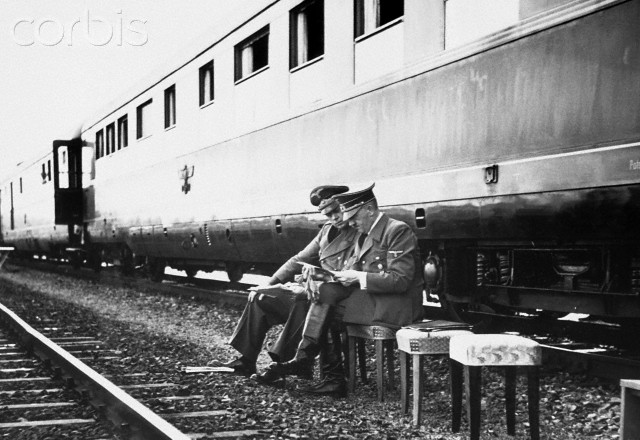 |
| Hitler outside his command train "Amerika." While the train was heavily defended, its most potent defense was its unpredictable schedule and whereabouts. |
This unpredictability became well-known to those who would like to have eliminated Hitler, but there was nothing that they could do about it. Extraneous factors always seemed to protect the Fuhrer: once an officer with a gun went to the Fuhrer headquarters determined to assassinate Hitler, but for some reason, on this one occasion, the SS guards refused him admittance. It is clear that they did not suspect anything, because in that case the man would have been shot instantly. It was just the lucky charm, the "Devil's hand" as the would-be assassins called it, that continually protected Hitler.
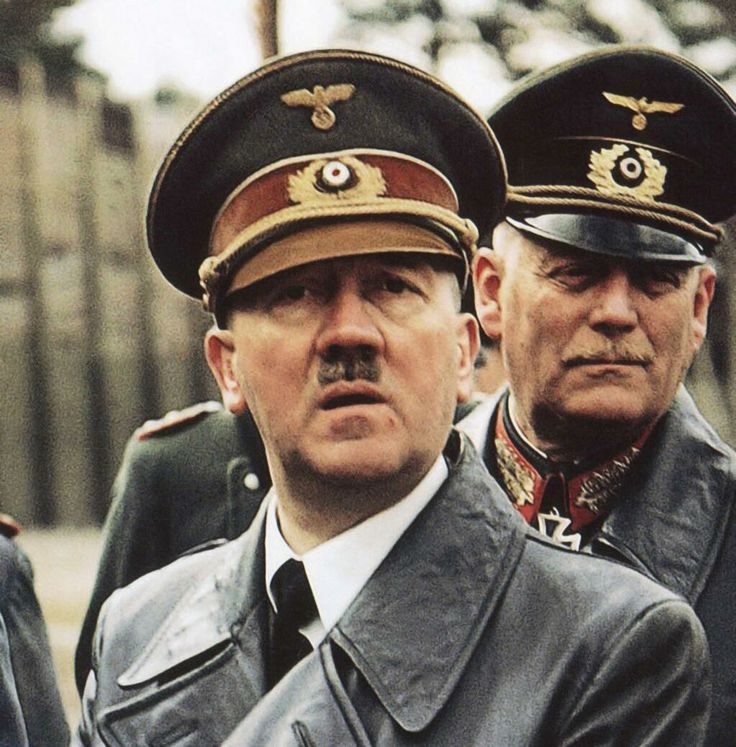 |
| Hitler's cap is believed to have held a metal plate. |
Hitler also wore body armour when out in public, at least after the war began. His peaked cap was believed to contain a lead plate, and some of his uniforms appeared to contain bullet-proof vests. When venturing into military zones, Hitler even occasionally would don a holster and pistol, though this was extremely rare.
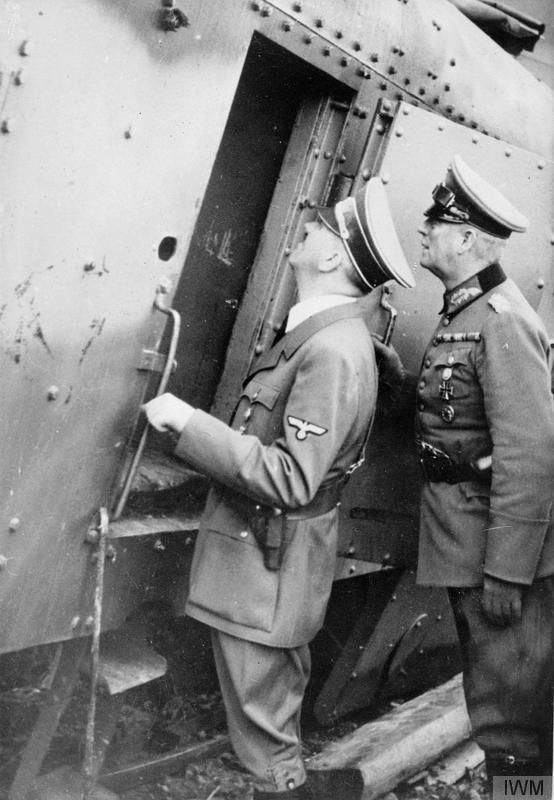 |
| Hitler wearing a side-arm while inspecting an armoured train in Poland. |
However, careful as Hitler was, there was one place that he felt secure: Berchtesgaden. While always protected there by security detachments, anti-aircraft guns and the like, the Berghof compound itself was relatively unguarded. It was the one spot where Hitler felt free to go outside, breath some fresh air, and not worry about his safety. He had always loved to walk in the mountains, and the Berghof offered him that opportunity, free of any cares.
The SOE
Hitler was right about one thing: he was safe at the Berghof from German assassins. The SS guards at the front gate were very effective, and the entire area - which included homes for Goering and Goebbels, along with military barracks and other installations, some 80 buildings in all - was patrolled and under surveillance. Any amateurish assassin - such as the members of the Stauffenberg plot - wouldn't stand a chance blundering in there.
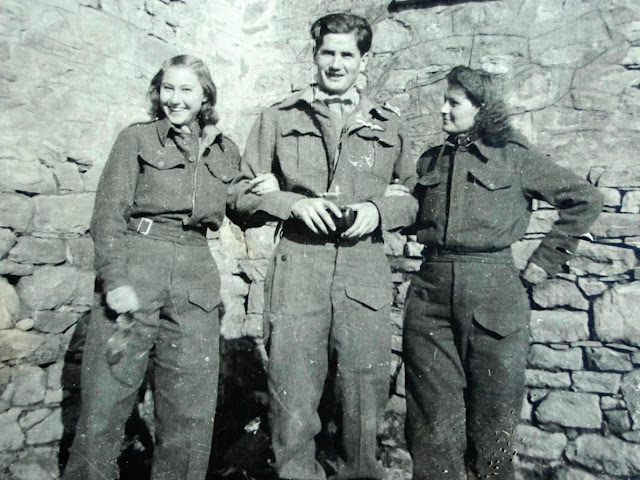 |
| An SOE agent, Philip Worrall, OBE, on assignment in the Greek mountains. He does not look too badly off. |
There was one group of assassins, though, who were not amateurish in the slightest and, in fact, were quite deadly and effective. This was the British Special Operations Executive (SOE). This was a James-Bond type operation (the Director of SOE was only referred to as "CD") designed to infiltrate agents into occupied territory and carry out missions there. SOE had contacts with resistance forces throughout Europe, including some near Berchtesgaden.
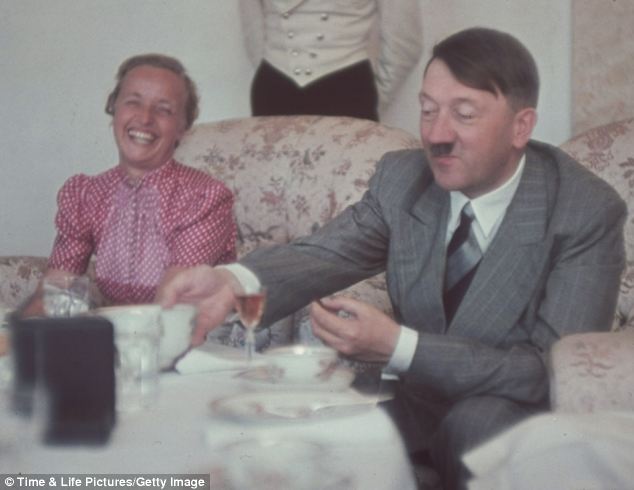 |
| Hitler at the teahouse with a companion. |
As the war ground on, many ordinary Germans became quite resentful of the war's cost to them personally and the nation in general. Of course, they could not express such feelings openly, as many who did were sent to the concentration camps. However, the SOE was excellent through its web of spies at identifying and recruiting locals who might be useful in piecing together a larger operation. For instance, an agent parachuted into occupied France or Germany would need a place to stay while carrying out a mission; the SOE knew who to ask. There might be one person giving the commando shelter and sustenance, another taking him to the place where he would carry out his mission, and so forth. Even a seemingly simple mission, such as the assassination of Reinhard Heydrich in June 1942, required extensive training, planning and, most importantly, assistance near the target.
Operation Foxley
The SOE decided early on that Hitler would be a target. Its first nebulous idea was simply to bomb Hitler's command train "Amerika." This plan ultimately was dropped because Hitler, as discussed above, was too predictably unpredictable. Hitler ordered his train personnel to inform stations that it was coming through only minutes before it arrived, varied its routes, left at different times, and so on. The SOE plan did not stand a chance and was shelved.
 |
| The famous "Hotel zum Türken" ("Turkish Hotel"). It is located next to the Berghof site. Hitler's SS security detachment was housed here. It is one of the very few buildings in the vicinity with a Third Reich association that remains, as it was a private dwelling essentially confiscated by the government. The private owners demanded and received it back after the war, and it remains in use as a hotel today. |
The SOE put the assassination concept on hold until a specific opportunity arose. One finally did in June 1944. Subsequent to D-Day, the invasion forces took prisoner a German who at one time had been part of the security detachment in Berchtesgaden. Probably without thinking much of it, this man described normal routines at the Berghof, how people could know that Hitler was in residence there, and so forth.
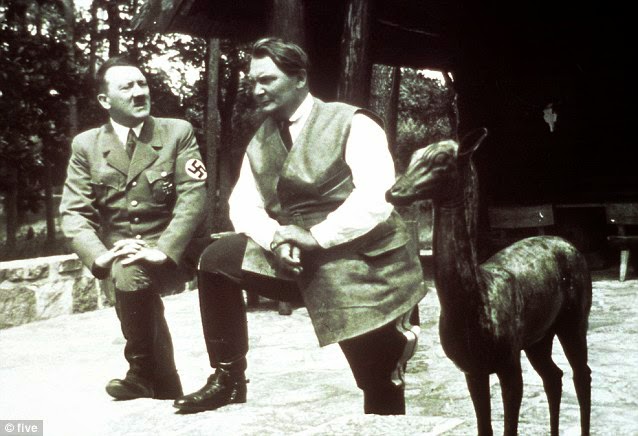 |
| Hitler and Goering at a scenic overlook at the Berghof, each trying to adopt a more studied manly pose for the camera. I think Goering won this round. |
The SOE could not believe its luck. Among the things that they learned was that the staff at Berchtesgaden would raise a Swastika flag whenever Hitler was there, but not otherwise.
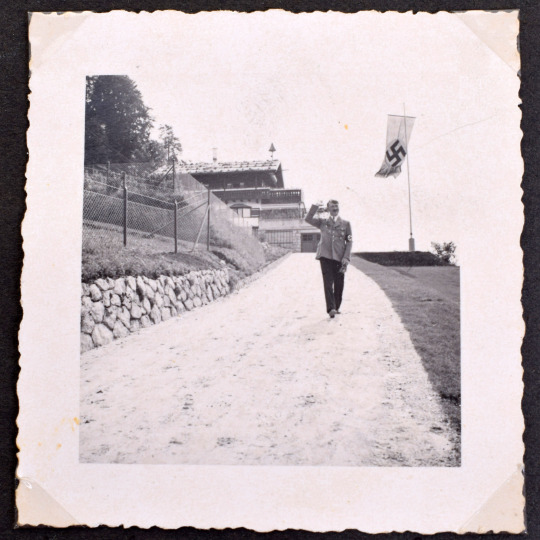 |
| Adolf Hitler posing with the Swastika flag (Credit: C&TAuctions/BNPS). |
The prisoner also told them that when Hitler woke up around 10:00 a.m., he invariably would head out for a 20- or 30-minute walk to the teahouse (
not the Eagle's Nest, which is on another mountain) on the Obersalzburg that was on the other side of the Berghof compound.
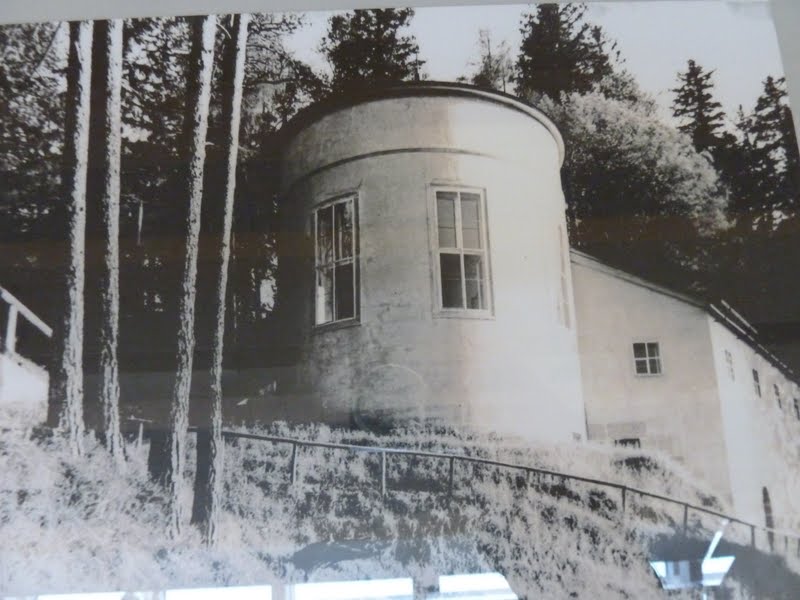 |
| The tea house on the Mooslahnerkopf. It was of Hitler's own design and was finished in 1937. It was a small building against the mountain side, with a rectangular lay-out and with an 8 meter diameter circular room on the side. It was demolished long ago. One can see the path that Hitler likely walked. |
This walk featured scenic vistas of the valley below. The view went both ways, of course. A carefully sited sniper with the right weapon would have an unmatched opportunity to alter world history. Due to Hitler's unpredictability, the agent would have to be smuggled into a safe house near Berchtesgaden and then wait for an indefinite period of time before an opportunity arose to carry out the mission. They would know that Hitler was in residence when the Swastika flag flew over the Berghof; then, it would only be a matter of getting into position and waiting. Using a POW named Dieser, the SOE located his uncle, a shopkeeper in nearby (20 km) Salzburg identified as "Heidentaler," who was opposed to the Hitler regime. Heidentaler would house two agents and then transport them to Berchtesgaden for the job disguised as German mountain troops.
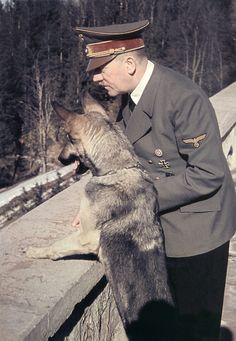 |
| A tempting target. |
The plan quickly went up the British chain of command. Winston Churchill personally approved it. The head of SOE's German Directorate, Lt. Colonel Ronald Thornley, was not quite so confident. Without attacking the feasibility of the operation itself, Thornley was not convinced that assassinating Hitler would further the Allied war effort.
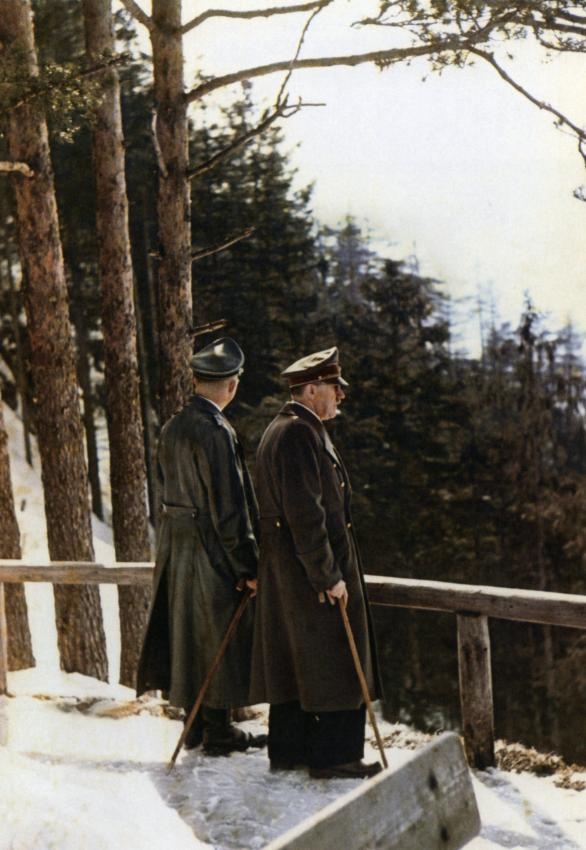 |
| Hitler with Heinrich Himmler at the teahouse, 3 April 1944. |
Hitler was known to have absolute control over German force deployments and strategy, and his conduct of operations was horrible. Leaving Hitler in place to ruin the German army, Thornley believed, was a better strategy than making him a martyr. This line of thinking became a major plot point in Lee Marvin's 1985 film, "The Dirty Dozen: Next Mission."
 |
| Hitler during his final visit to Berchtesgaden, in July 1944. |
In the event, due to these sorts of misgivings, Thornley and his colleagues at SOE never actually approved the plan despite its support at "higher levels." Operation Foxley became impossible for other reasons. The British would have had to act extremely fast, because Hitler left the Berghof for the last time on 14 July 1944 for East Prussia. He never returned to Berchtesgaden. By January 1945, Hitler was in the bunker in Berlin, where no sniper would ever reach him.
2016
